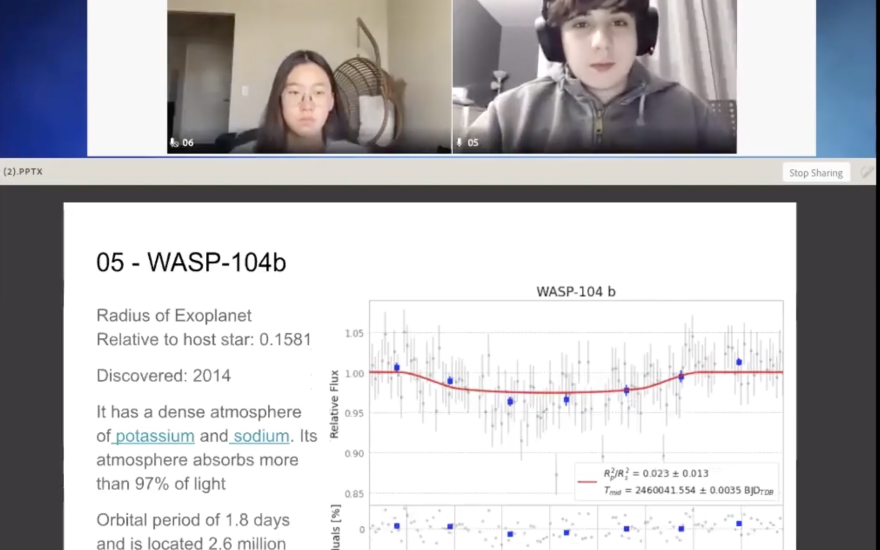Many stars outside our solar system are orbited by planets. When these exoplanets cross in front of their host stars from the perspective of Earth, there is a temporary dip in the amount of light that reaches Earth from the star, which can be plotted on a light curve.
The Astrobiology students of the Stanford OHS "Life in the Cosmos" course analyzed these images and plotted the light curves of exoplanet host stars, allowing them to dig deeper into some of the properties of their exoplanet systems. Telescope time for their images was generously donated by PlaneWave Instruments and Las Cumbres Observatory.
Stanford OHS Astrobiology students uploaded their analysis of the exoplanets they observed to the American Association of Variable Star Observers (AAVSO) Exosite, from which it was scraped by the NASA Jet Propulsion Laboratory Exoplanet Watch Citizen Science initiative. According to Stanford OHS science instructor Kalee Tock, as part of Exoplanet Watch, the students' analysis will be made available to astronomers and NASA scientists, who will use it to study these exoplanets.
"Their work will help to improve telescope time allocation algorithms for the James Webb Space Telescope and other instruments," Ms. Tock said. "If and when any student's analysis is used in future astronomical research, the student will be credited."
Thank you so much to PlaneWave Instruments, the American Association of Variable Star Observers (AAVSO), Las Cumbres Observatory, and NASA Exoplanets Watch for making this project possible!
